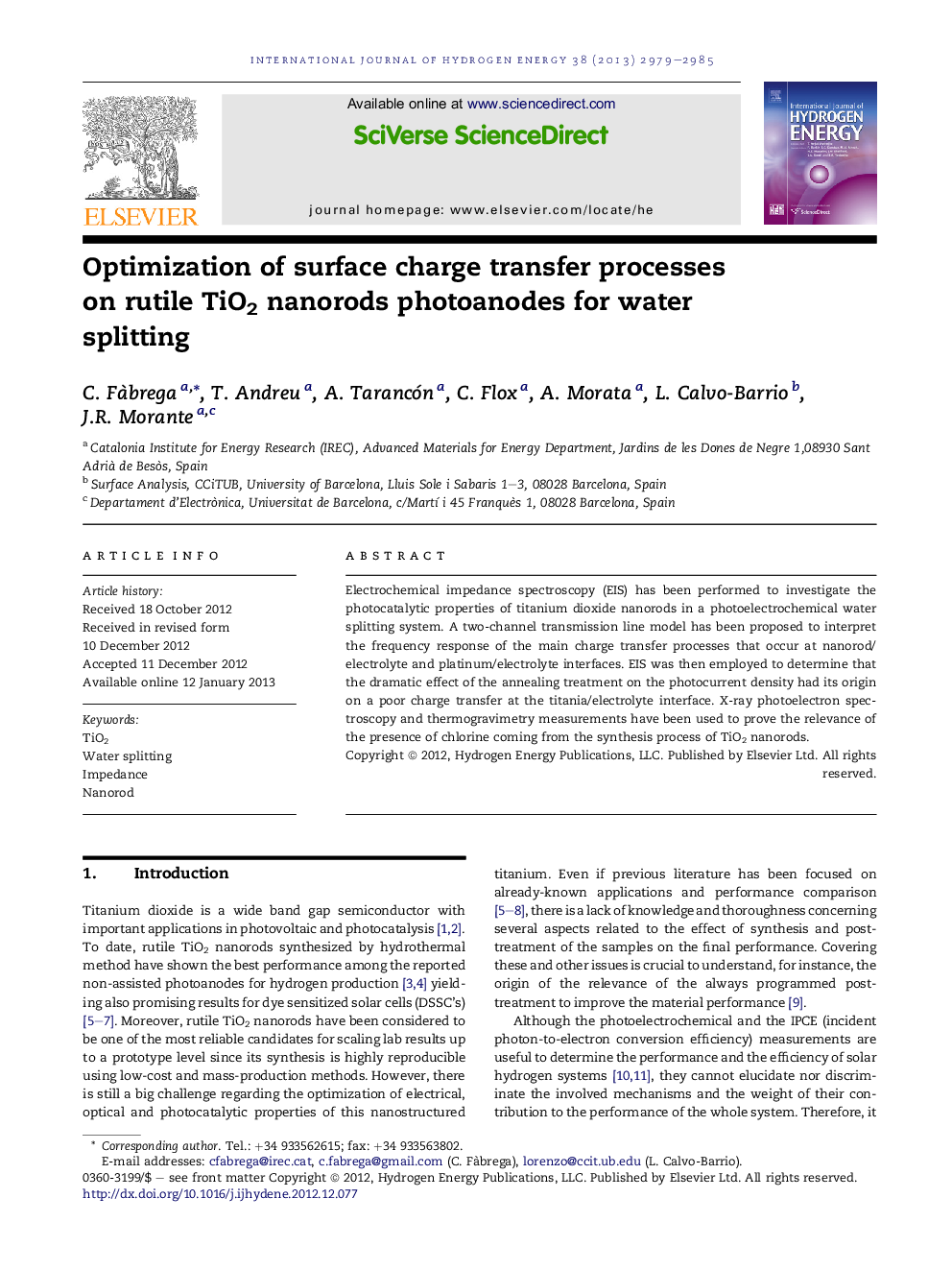| Article ID | Journal | Published Year | Pages | File Type |
|---|---|---|---|---|
| 1281963 | International Journal of Hydrogen Energy | 2013 | 7 Pages |
Electrochemical impedance spectroscopy (EIS) has been performed to investigate the photocatalytic properties of titanium dioxide nanorods in a photoelectrochemical water splitting system. A two-channel transmission line model has been proposed to interpret the frequency response of the main charge transfer processes that occur at nanorod/electrolyte and platinum/electrolyte interfaces. EIS was then employed to determine that the dramatic effect of the annealing treatment on the photocurrent density had its origin on a poor charge transfer at the titania/electrolyte interface. X-ray photoelectron spectroscopy and thermogravimetry measurements have been used to prove the relevance of the presence of chlorine coming from the synthesis process of TiO2 nanorods.
Graphical abstractFigure optionsDownload full-size imageDownload as PowerPoint slideHighlights► TiO2 nanorods exhibit high photoelectrochemical efficiency under sunlight. ► The efficiency is strongly affected by a final heat treatment step during synthesis. ► Residual chlorine species from the synthesis process block the reaction sites. ► Heating above 250 °C under O2 needed to completely remove residual chlorine species.
